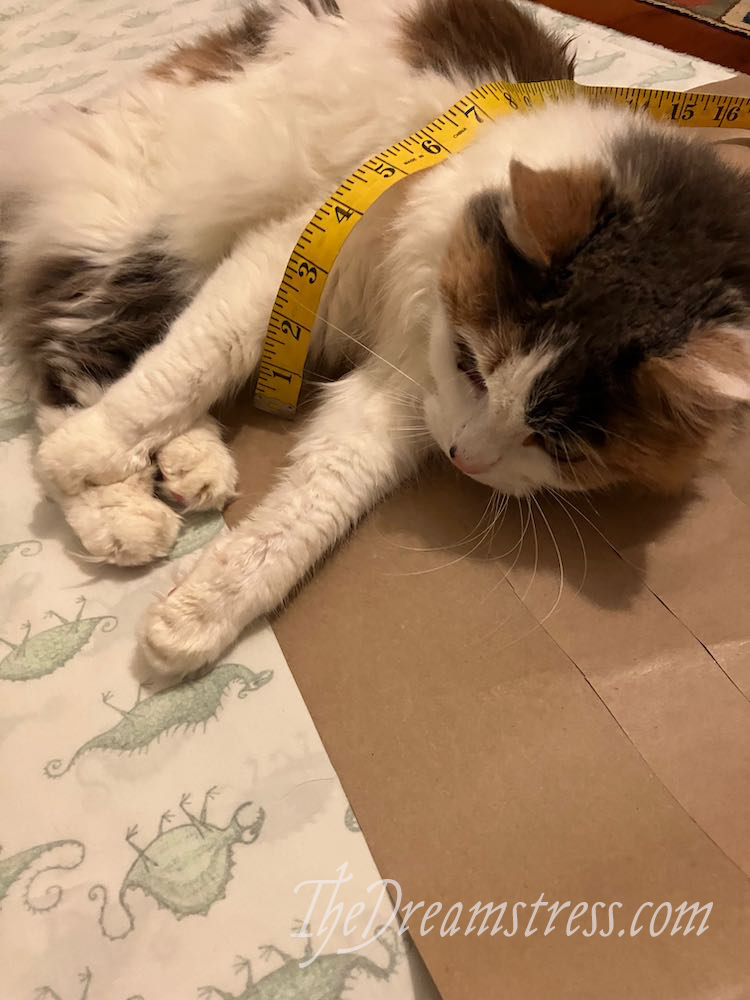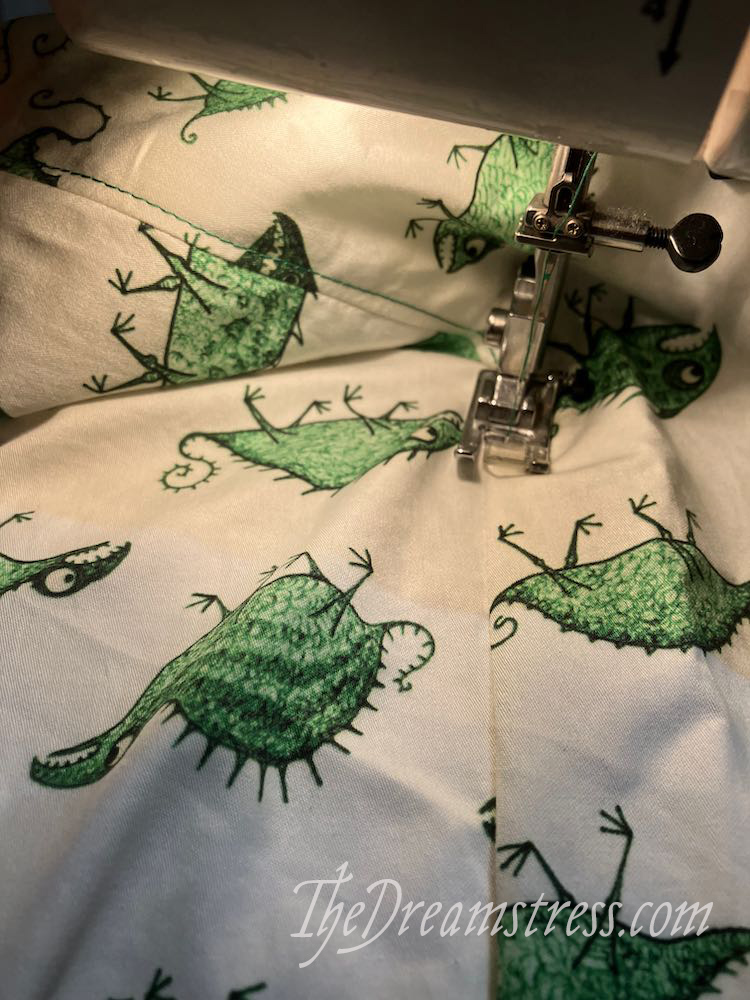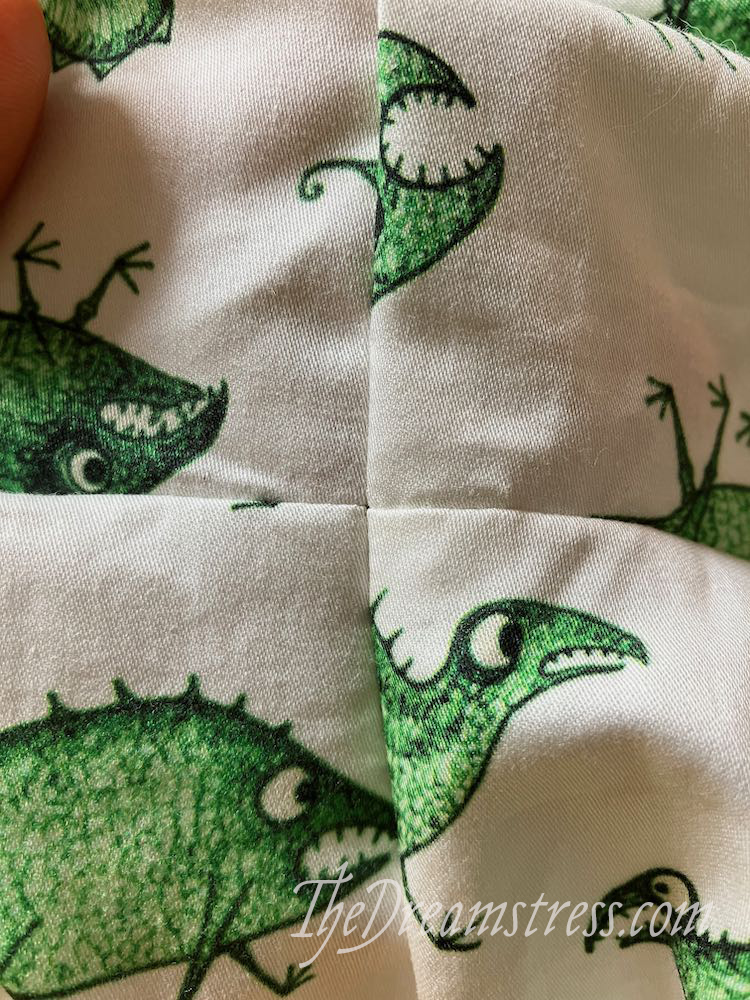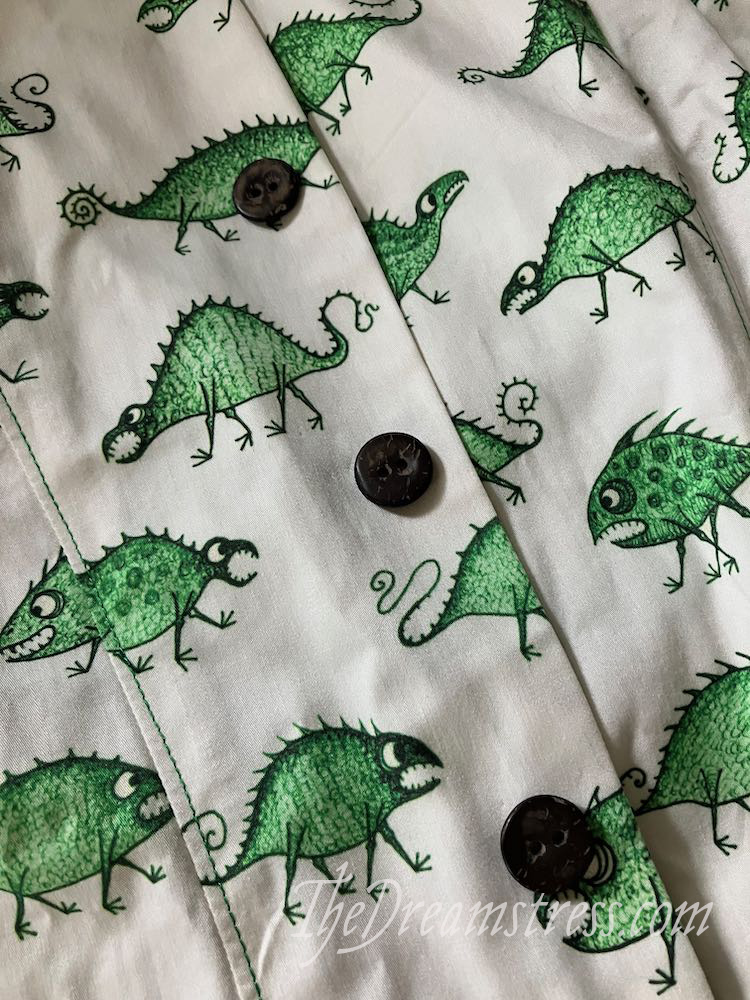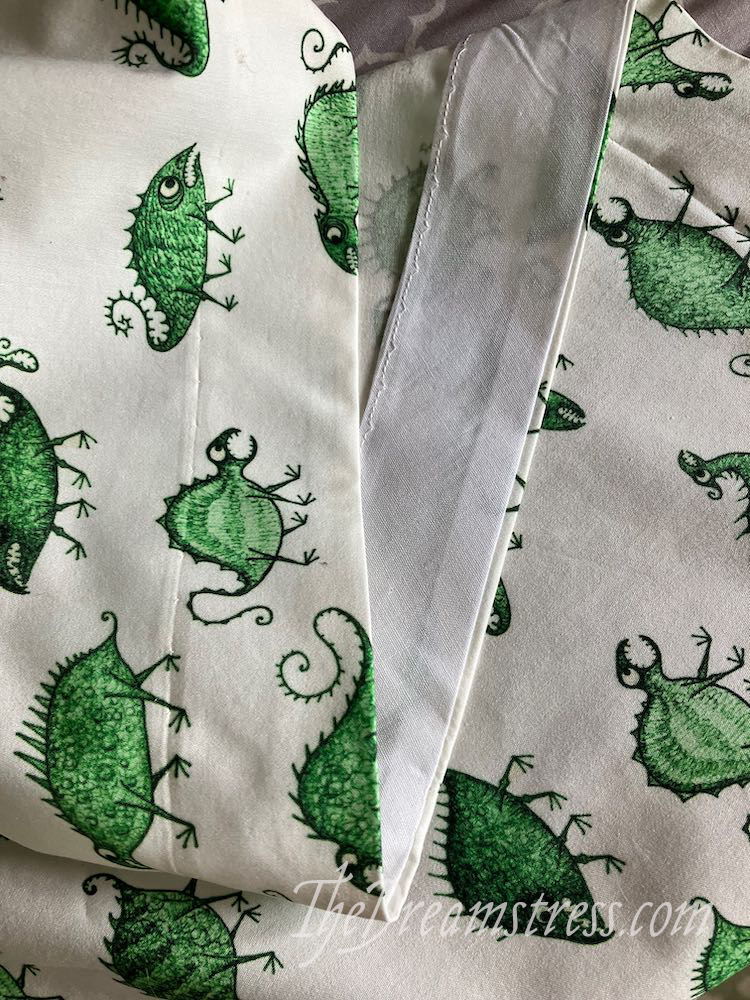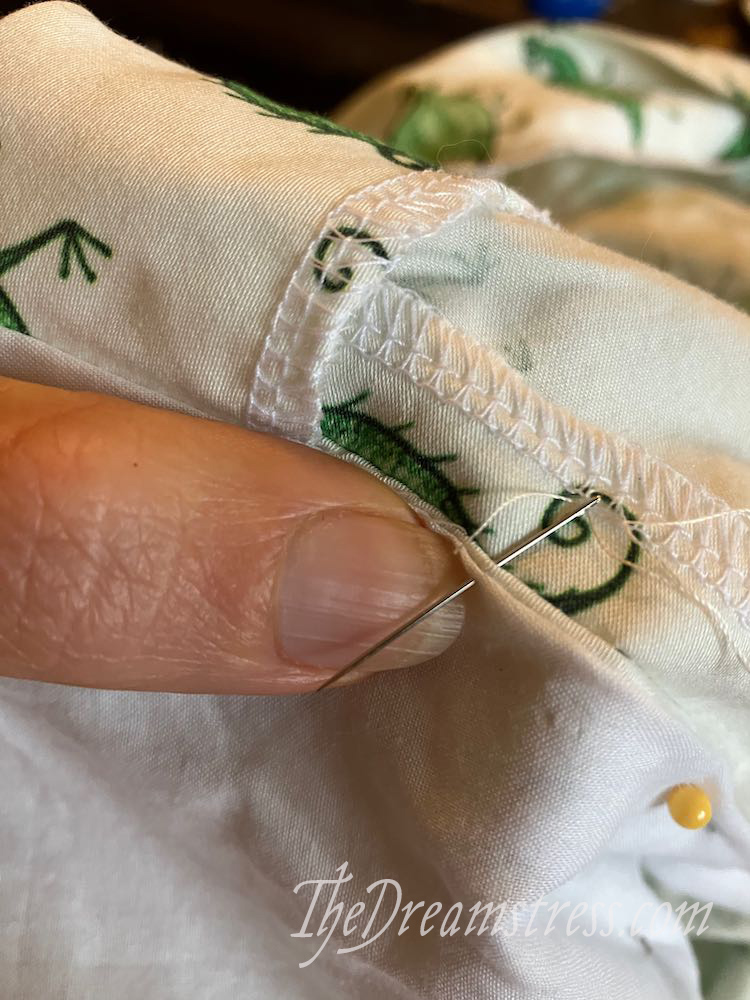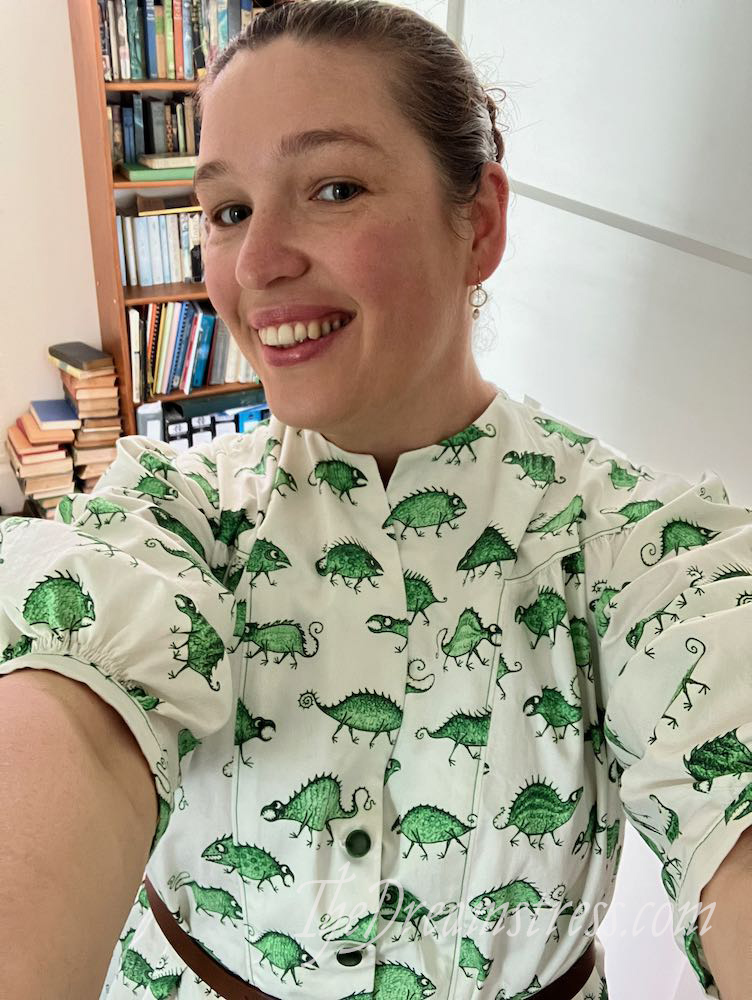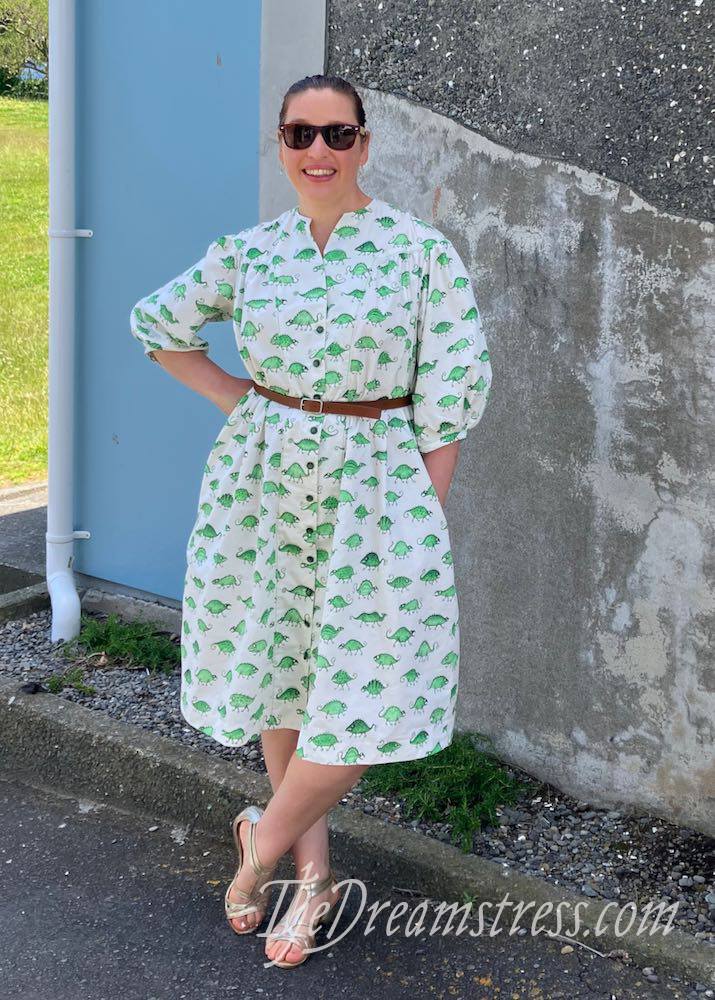We’ve just launched the Scroop + Virgil’s Fine Goods Aidah Gown pattern, and I’ve introduced it as the ‘sister’ pattern to the Angelica Gown. There is a lot in common between the two pattterns: they cover the same timeperiod, are both Italian gowns, and they have interchangeable elements.
But, like real sisters (or at least my sisters – the youngest likes to say of me: “she’s nothing like me“), they are also very much their own distinct individuals.
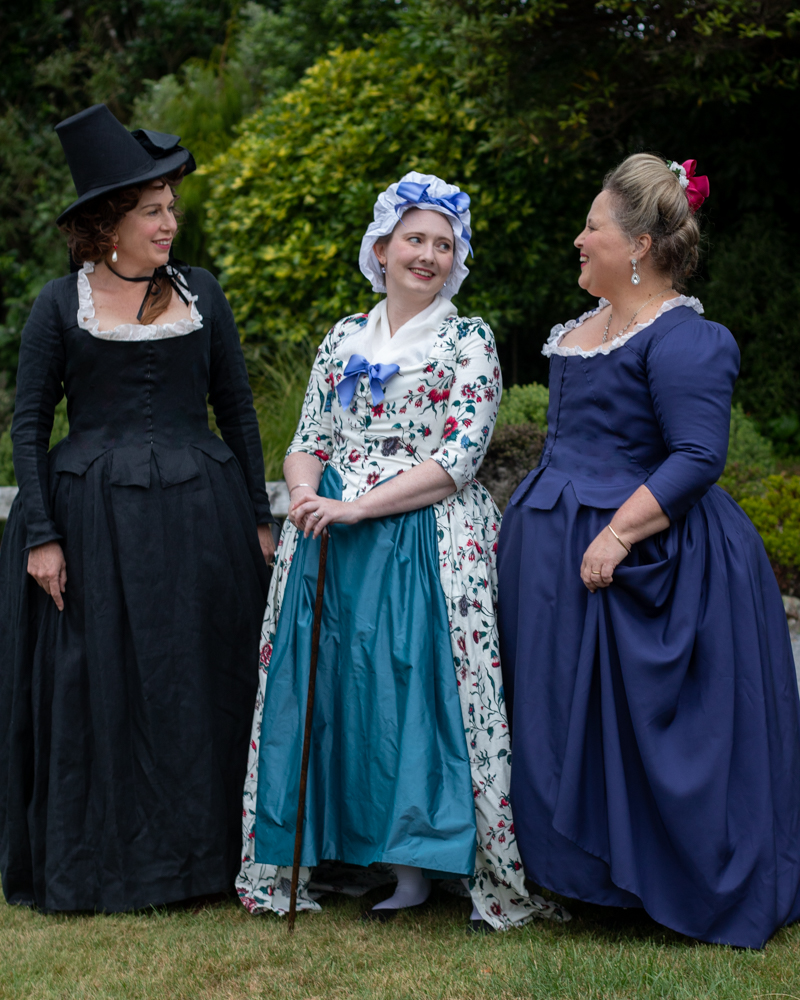
So, how are the patterns different?
In brief, they have:
- Side seams (Angelica) vs no side seams (Aidah).
- Different front necklines
- Different front points/tab options
- Different back necklines
- One piece sleeves (Angelica) vs two piece sleeves (Aidah)
- Different back point lengths
- Different seaming in the four-panel back option
- Different front-fastening options: lacing for the Angelica, hooked or pinned for the Aidah
- Different construction details in the instructions whenever there were multiple historically accurate options for how to construct an Italian Gown – we picked one technique for each pattern.
I’ll go into each of these differences in detail below.
Here’s a helpful overlay of the pattern line drawings to show the differences. The Angelica is in pink, the Aidah is in black:
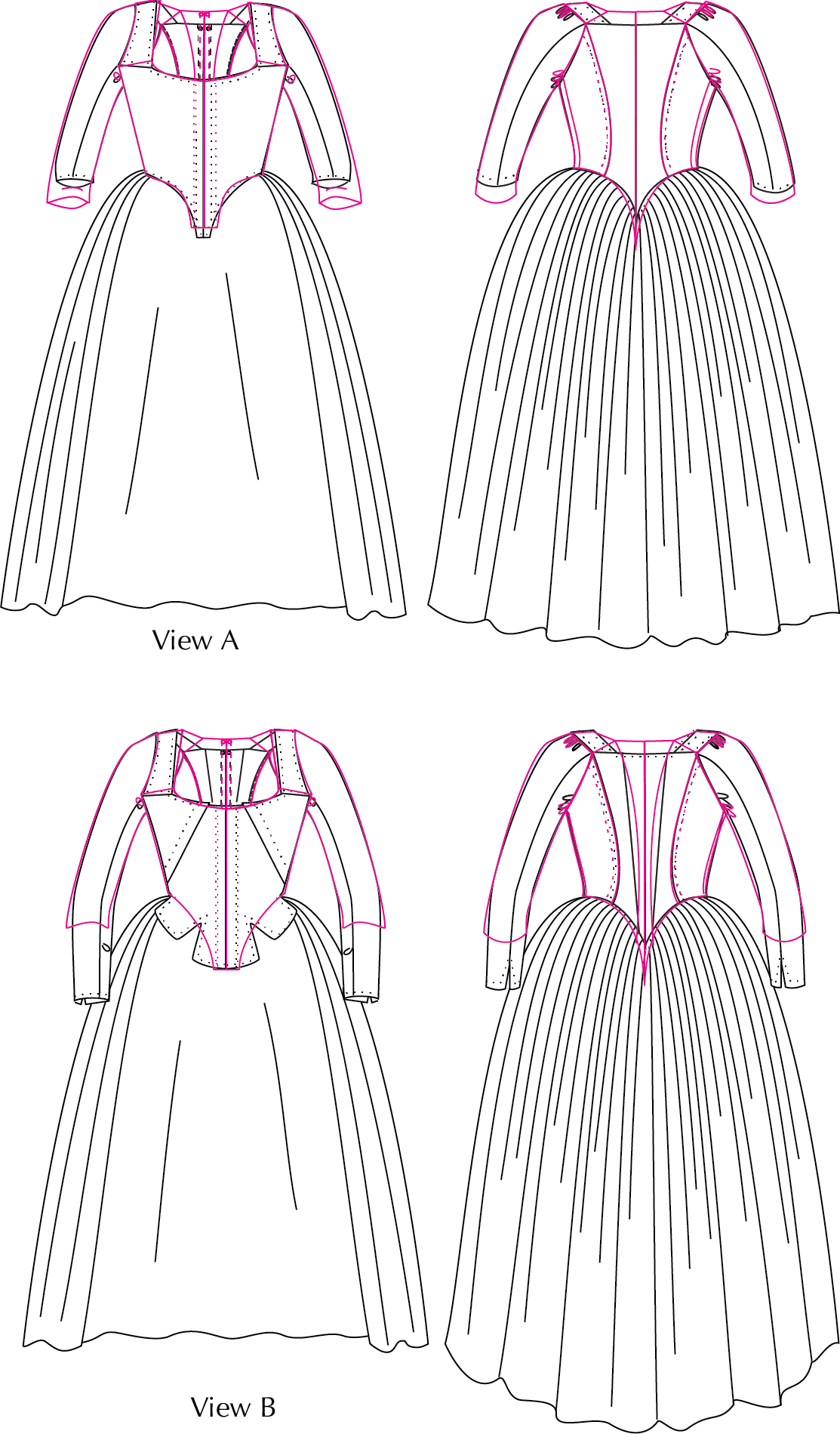
Our goal with making the Aidah pattern was to make it as different from the Angelica in cut and construction while still having elements, like the sleeves and fronts/backs, that you could mix between the two patterns, to have as many options as possible if you had both patterns.
The Differences:
Side Seams:
The biggest difference between the two patterns, although it’s one that is very subtle in the line drawings, is that the Angelica has a side seam, and the Aidah does not. So the Angelica is constructed with a front piece and a separate side-back piece, while the Aidah has a front piece that wraps around and joins the back with no side seam.
Both options are accurate ways to pattern an Italian Gown, but they result in very different pattern pieces.
The lack of side seam means the Aidah is a faster make (one less piece to cut and seam to sew actually makes quite a difference!), but the Angelica is easier to fit and adjust.
If you’re new to 18th century fitting I’d actually recommend starting with the Angelica, as the side seam makes it an easier pattern to adjust.

The Aidah Gown: See Ma, no seam!
Front Fastenings:
The second biggest (or at least, most obvious) difference between the two patterns is how they fasten. The Angelica features an interior lacing, with flaps that hide the laced fastening.
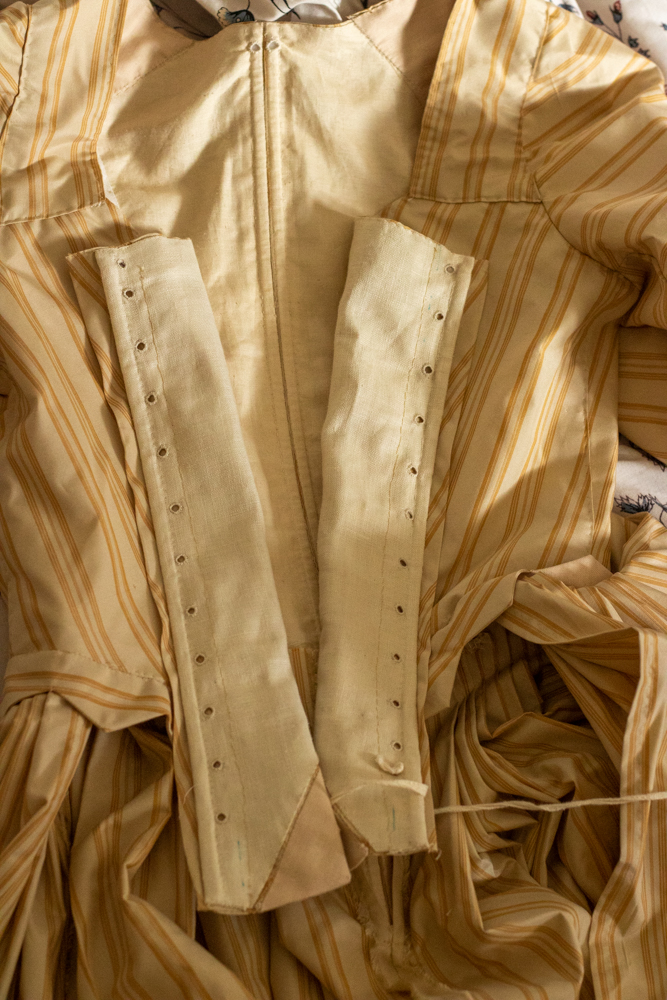
The hidden front lacing of the Angelica Gown
The Aidah has instructions for a pinned-front closure (the most common closure in the 18th century) or a hooked front closure (a less common closure, but one that did exist, and one that is easier to do if you’re not used to pins).
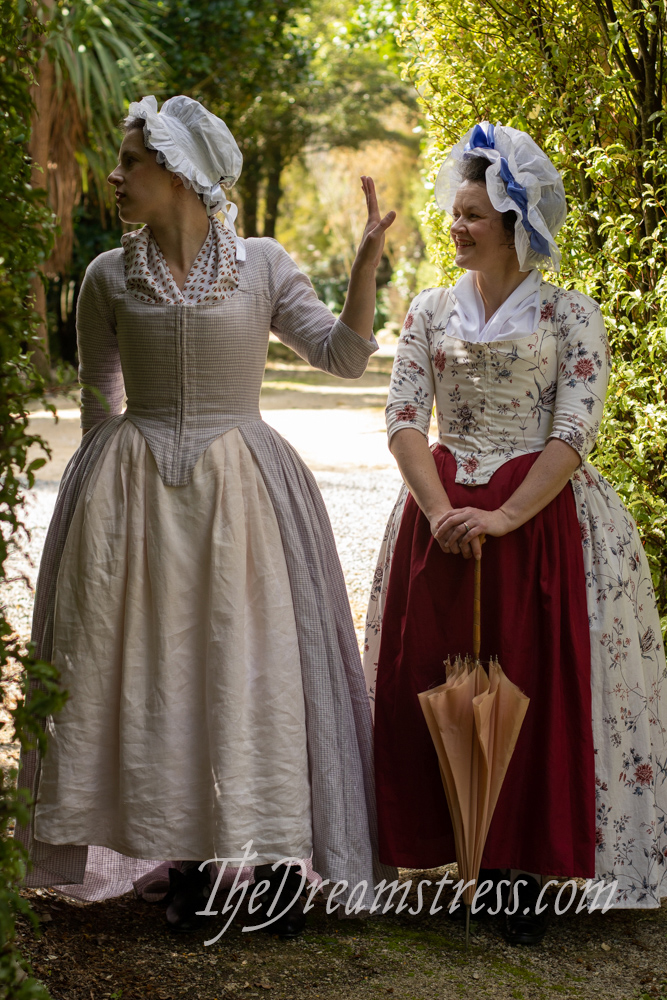
Angelica View B (purple check) with a hooked fastening borrowed from the Aidah, next to an Angelica View A (floral).
Here’s an Angelica gown (View B, in lilac checked linen) made with the hooked front instructions from the Aidah, to check that the instructions are transferable across the two patterns.
Sleeves:
Another major difference between the two patterns is sleeves. The Angelica has a single-piece sleeve with an elbow dart for shape. The Aidah has a two-piece sleeve. The two piece sleeve allowed us to include three sleeve lengths in the Aidah, including a full length sleeve (the pattern includes a detailed discussion of the historical accuracy – or not- of this length).

Aidah View B with full length sleeves
The Front Neckline:
The Angelica gown has a scooped curve that joins the shoulder straps at an angle. The Aidah, on the other hand, has a straighter, squarer neckline, with straps that join the neckline with almost no upward curve of the neckline.
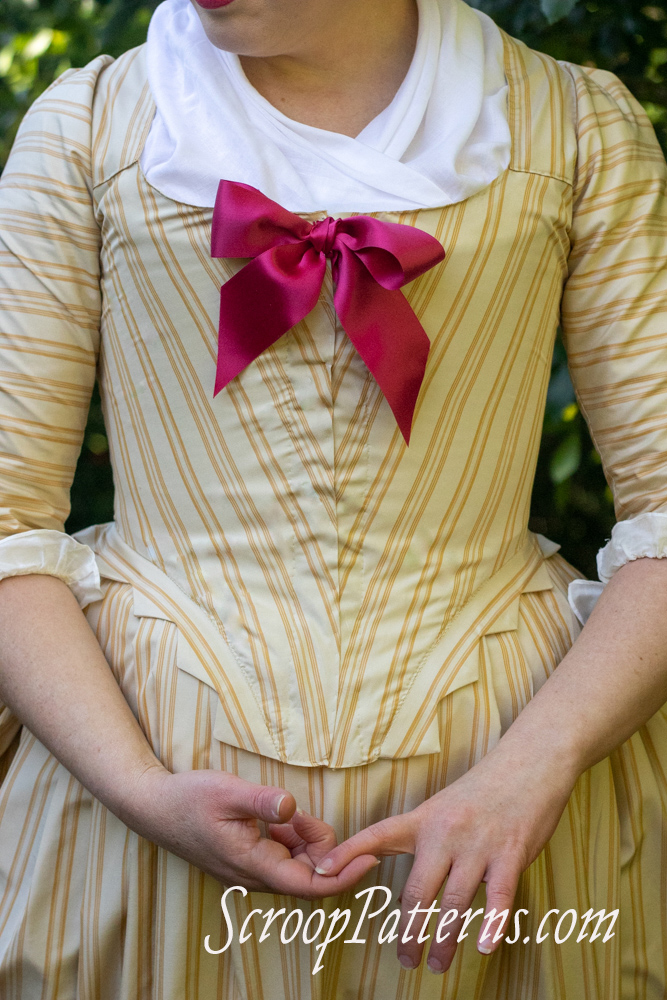
The Angelica Gown, with its more scooped out neckline
The Front & Waist Edge:
The difference between the View B Aidah and the Angelica is super obvious. The Aidah has a tabbed front, with the option of a cutaway effect.
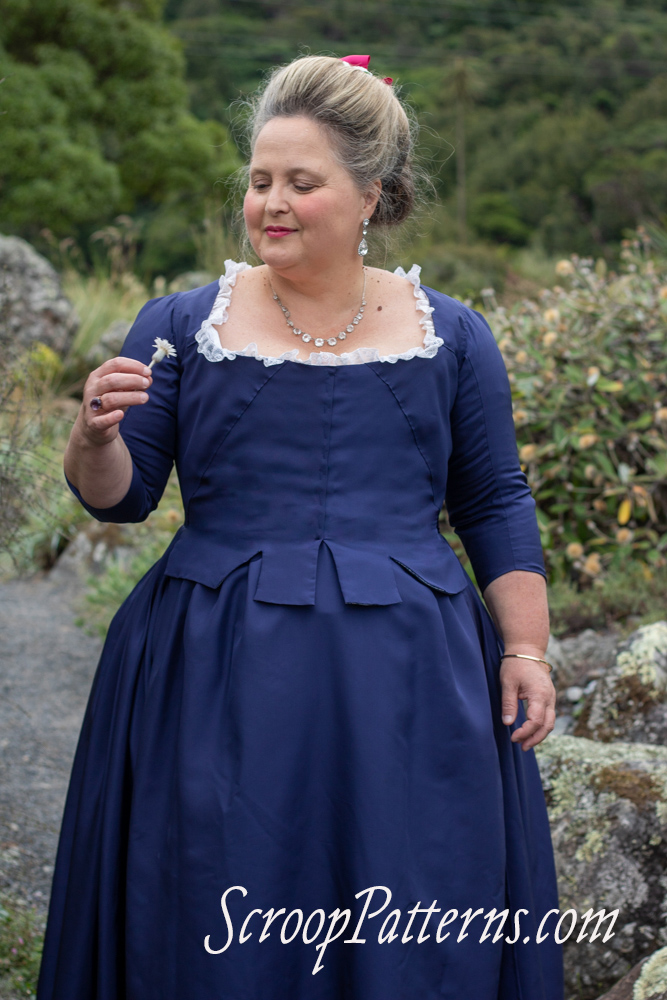
Aidah View B with tabbed front and cuttaway effect
While it’s not as immediately obvious, the View A Aidah is also different to the Angelica.
The View A Aidah’s point is longer and less abrupt than the View A Angelica, and shorter and curvier than the View B Angelica. It also comes to a slightly pointier and less squared-off point than either Angelica view.
Compare this:
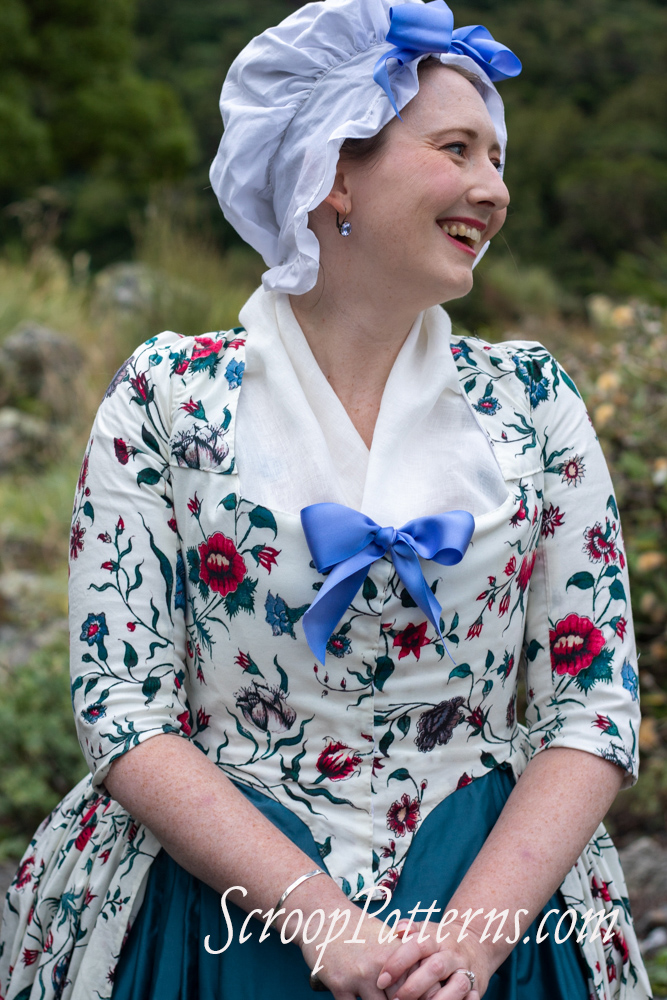
Aidah View A
To this:
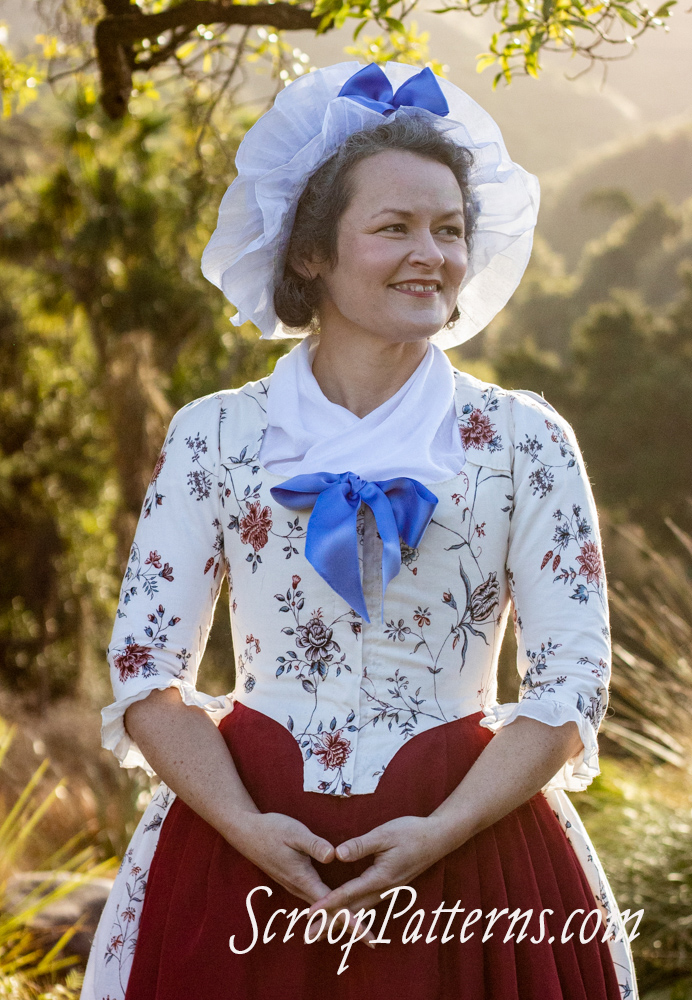
Angelica View A
The Back & Back Neckline:
The Aidah has a lower back neckline than the Angelica, with the straps meeting the neck edge in an almost straight line, compared to the steep angle of the Angelica back:
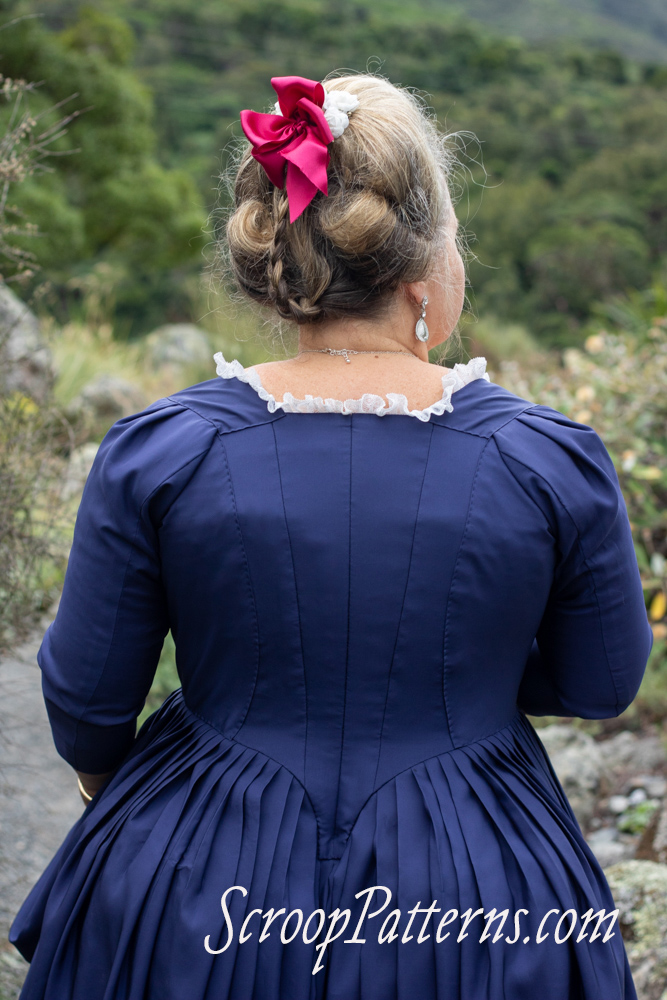
Aidah View B with a four-panel back
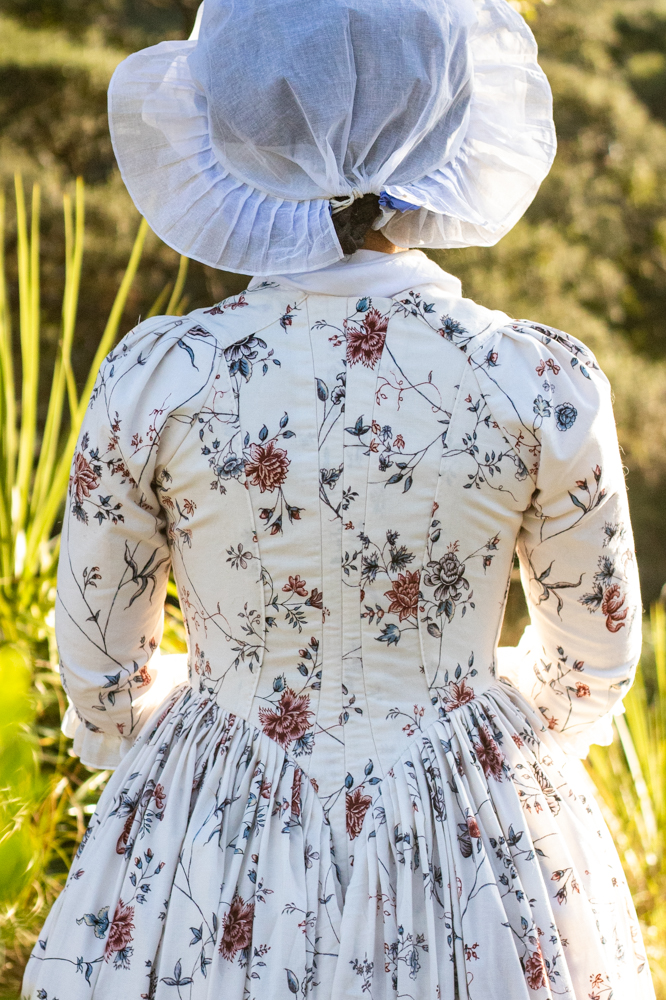
Angelica View A with a four-panel back
The Angelica also has a deeper back point than the Aidah, and the four-panel Angelica back features curved lines that swoop in and out at the waist, whereas the seams of the four-panel Aidah a head straight down in a V.
Constructions:
Finally, wherever possible we tried to cover different construction techniques in the Aidah and Angelica patterns, so if you have both you’d know a whole new set of techniques which could be applied to other 18th century garments.
This does mean that the Aidah is a HEFTY pattern. With two front fastening options, a cutaway option, and the rather tricky tabbed front of View B, it has a full 8 pages of instructions more than the Angelica (44 to the Angelicas 36), and an additional page of fitting instructions.
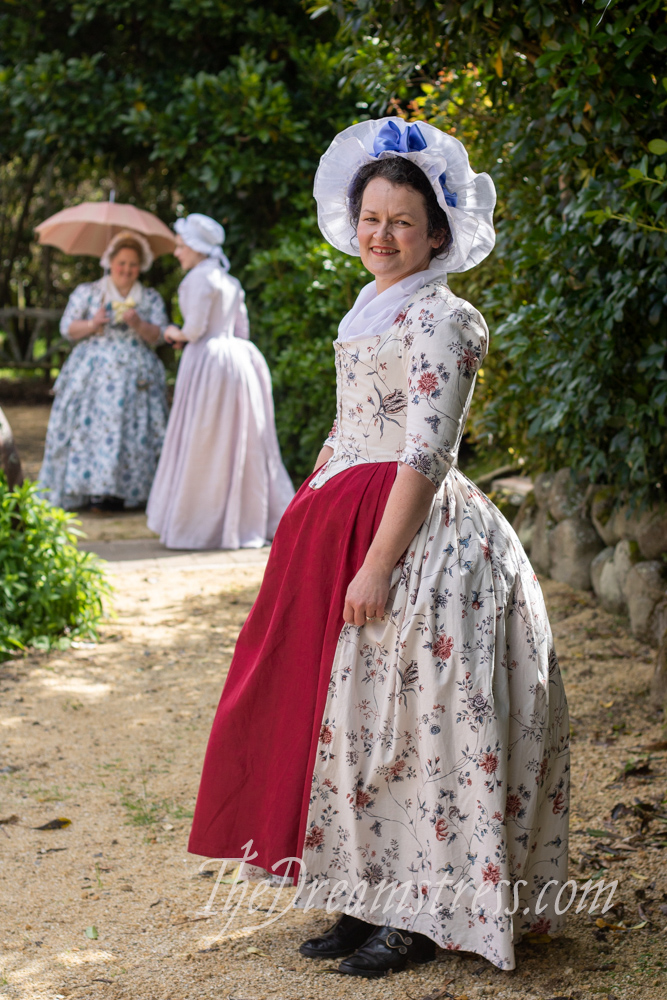
Even with all the differences, we were determined to make sure that the Aidah and Angelica still had enough points in common that they could be mixed and matched. You can switch the sleeves between both patterns. You can also pair the Angelica front with the Aidah back at the side-back seams, and vice versa.
So mix and match, buy either, buy both.
Whatever you do, either pattern will give you all the information you need to make an absolutely stunning Italian gown!
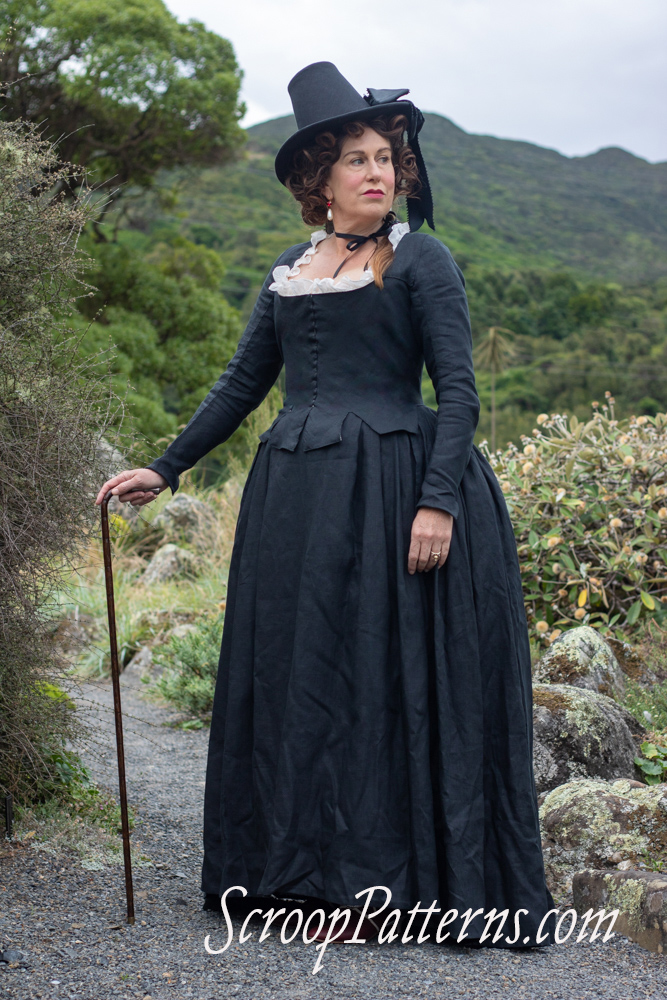

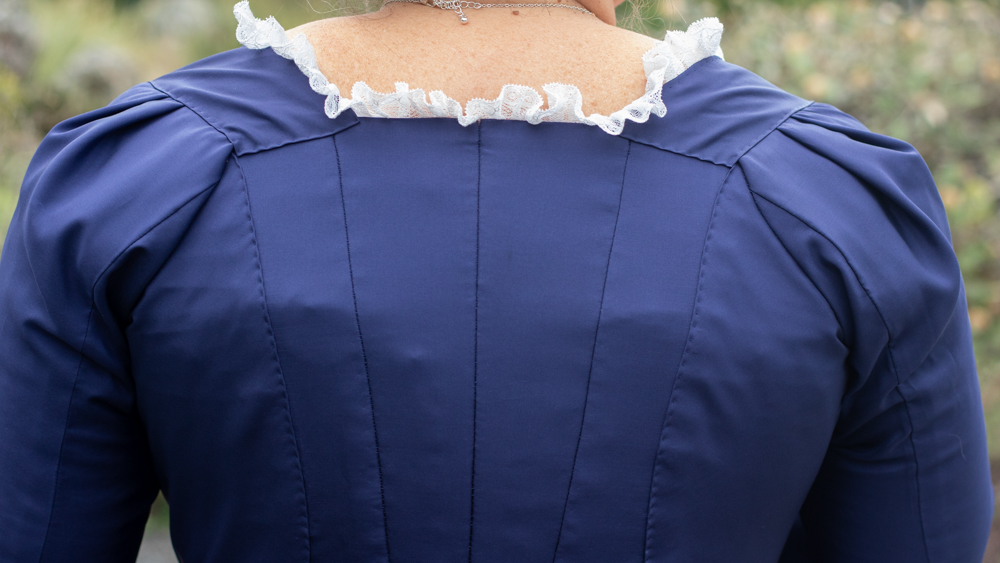

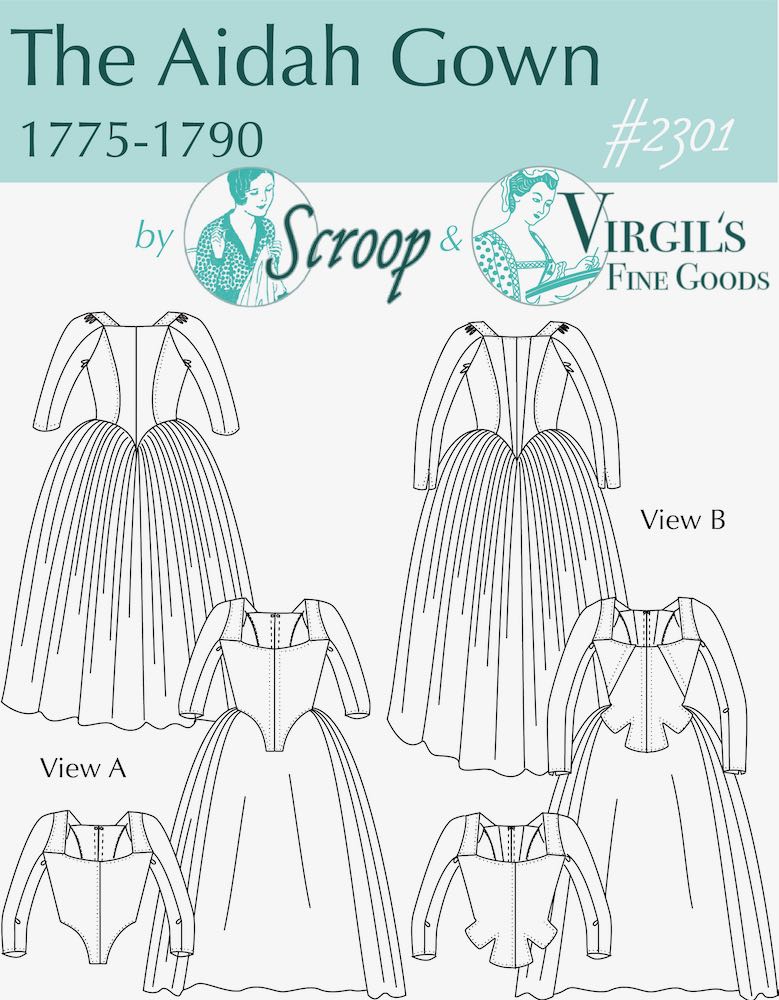
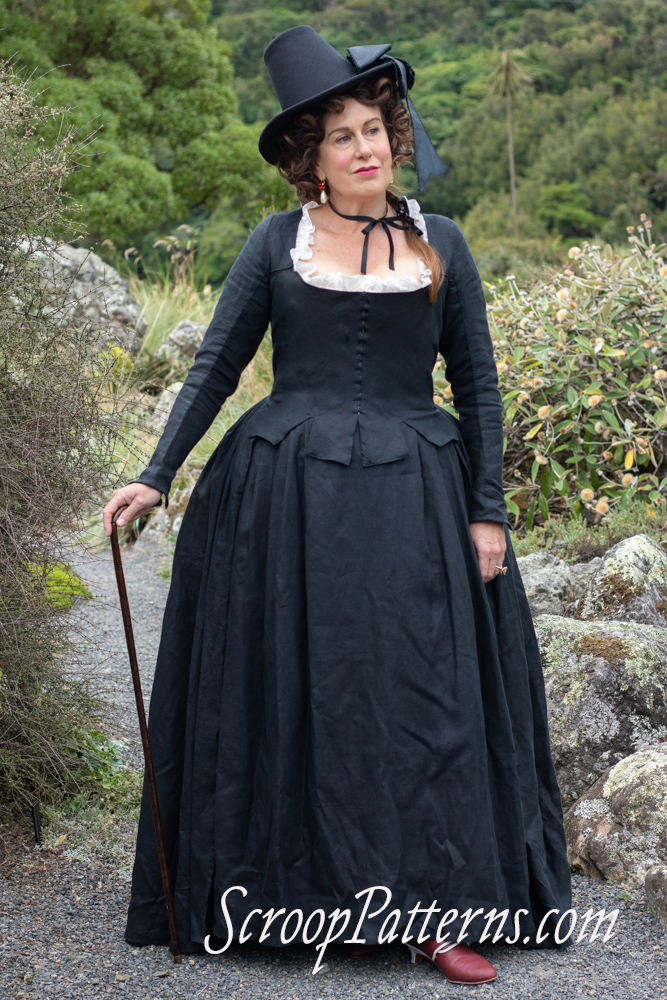
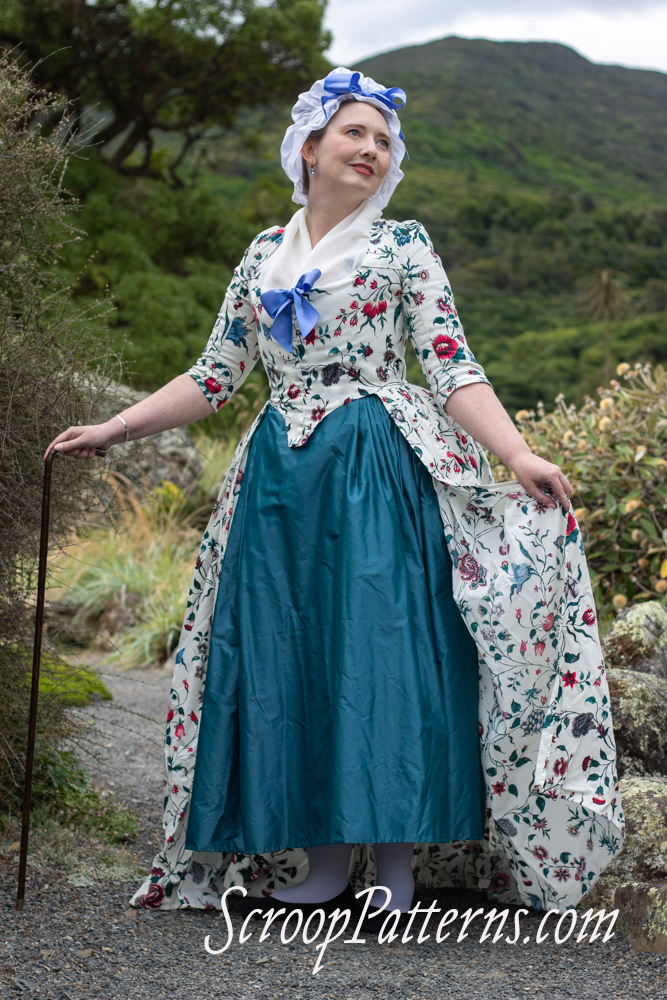
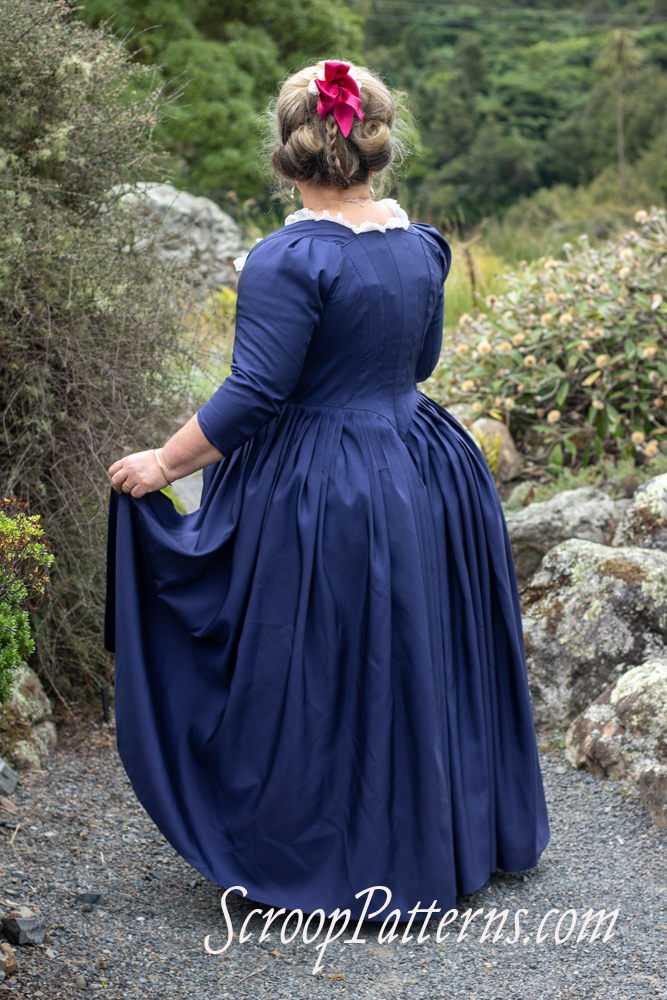

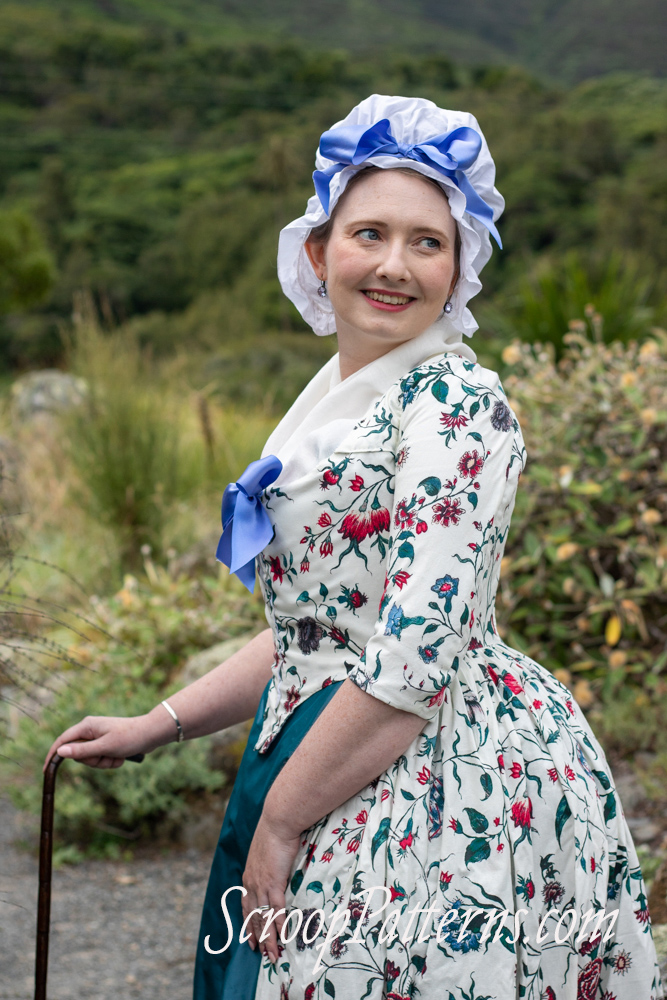
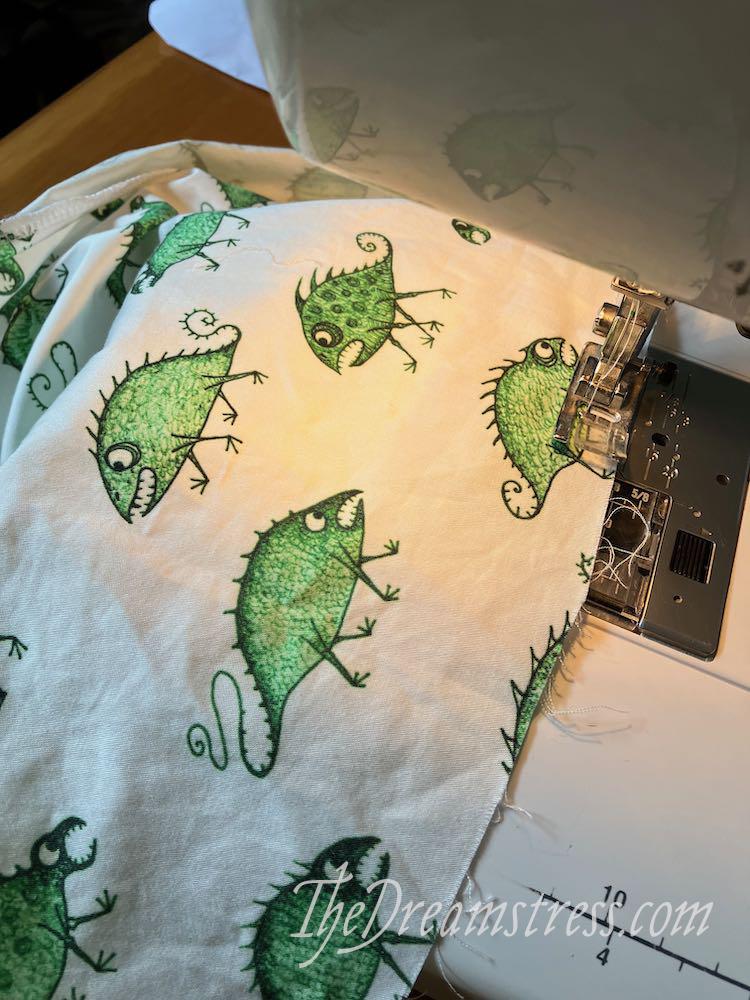 …and
…and 
